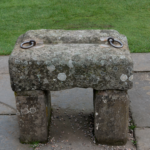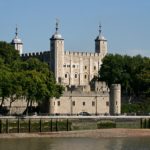 I don’t know about you, but I spent last Saturday watching the Coronation of King Charles and Queen Camilla. I love the traditions and the history involved. This is the formal ceremony for the new monarch, but a sovereign’s reign begins with the death of the previous. Queen Elizabeth II was the queen for 70 years. Few Britains today can remember anyone else. And her son, Prince Charles, held the longest apprenticeship on record before taking the helm on 8 September 2022.
I don’t know about you, but I spent last Saturday watching the Coronation of King Charles and Queen Camilla. I love the traditions and the history involved. This is the formal ceremony for the new monarch, but a sovereign’s reign begins with the death of the previous. Queen Elizabeth II was the queen for 70 years. Few Britains today can remember anyone else. And her son, Prince Charles, held the longest apprenticeship on record before taking the helm on 8 September 2022.
While the ceremony has been changed over the years, most of it has remained essentially the same, combining elements of religion, the UK’s constitution, and a bit of theatre. The Coronation Oath is the only part of the ceremony required by law. While the wording has evolved to reflect changes, the monarch promises to govern the people of the UK and the Commonwealth “according to their respective laws and customs.”
Though the current format dates to 1902 for the Coronation of Edward VII, the ceremony is over 1,000 years old. It begins with a state procession by coach from Buckingham Palace to Westminster Abbey, where they proceed on foot down the aisle. The formal parts of the ceremony are the Recognition, the Anointing, the Coronation Oath, the Homage, and the procession back to Buckingham Palace. It is a symbolic formality, not the official start of the monarch’s reign.
English coronations have been held at Westminster Abbey since the crowning of Harold II in 1066. The earliest form of the Oath stems from a ceremony in 973 written by St. Dunstan for the coronation of King Edgar at Bath Abbey. Two forms of this survive. However, it is believed the second version was the one he used. A third, updated form was written during the reign of Henry I and used by his successor, Stephen, in 1135. This was revised for Edward II in 1308 and appears to focus on the relationship between the monarch and his nobles. Most of the modern version comes from the 973 King Edgar version, the most significant changes over the years were the change from the Catholic religion to the Church of England and the translation from Latin into English in 1603 in order to be understood by the people.
Early ceremonies were recorded by poets and artists. Re-enactments were sometimes staged in London theatres. A formal request was submitted to record the ceremony for the gramophone in 1902 but was rejected. However, Sir Benjamin Stone was allowed to photograph the procession to the abbey. And in 1911, Stone was allowed to photograph the Recognition, Presentation of the Swords, and the Homage for the coronation of George V. In 1937, George VI’s coronation was broadcast on radio by the BBC. The state procession was shown live. And at Queen Elizabeth II’s ceremony, all but the Anointing were televised live for the first time.
 The coronation of Charles III and Queen Camilla occurred at Westminster Abbey on 6 May 2023, after a period of mourning for his mother. This form of service was a more contemporary version of the second form used in 973, structured around the Anglican service. The couple left Buckingham Palace at 10:20 in the Diamond Jubilee Coach drawn by six Windsor Greys. On arrival, they lined up for the 11:00 procession down the aisle at Westminster Abbey. This procession was led by leaders and representatives of non-Christian religions followed by the different Christian denominations reflecting Charles’ desire to reach people of all faiths. King Charles and Queen Camilla were preceded by four peers of the realm carrying the standards of England, Northern Ireland, Scotland, and Wales. The pages attending them included Prince George of Wales (so cute!) and Camilla’s grandsons.
The coronation of Charles III and Queen Camilla occurred at Westminster Abbey on 6 May 2023, after a period of mourning for his mother. This form of service was a more contemporary version of the second form used in 973, structured around the Anglican service. The couple left Buckingham Palace at 10:20 in the Diamond Jubilee Coach drawn by six Windsor Greys. On arrival, they lined up for the 11:00 procession down the aisle at Westminster Abbey. This procession was led by leaders and representatives of non-Christian religions followed by the different Christian denominations reflecting Charles’ desire to reach people of all faiths. King Charles and Queen Camilla were preceded by four peers of the realm carrying the standards of England, Northern Ireland, Scotland, and Wales. The pages attending them included Prince George of Wales (so cute!) and Camilla’s grandsons.
Conducted by the Archbishop of Canterbury, the ceremony began with prayer before the monarchs were seated in the chairs of estate from 1953. Following this was the Recognition of Charles as the king from the four directions: east, south, west, and north where each was acknowledged with a resounding “God save King Charles!”
After the Archbishop of Canterbury acknowledged the existence of multiple faiths within the United Kingdom, Charles recited the Oath, promising to govern each of his countries according to their laws and customs. He then signed the written oath.
Following the collect, epistle, and gospel of the Holy Communion, the rite was interrupted for the Anointing. This is a private portion of the ceremony and is not recorded. Screens were placed around the King, concealing him from view. King Charles was anointed with holy oil blessed in Jerusalem with a spoon dating from the medieval period. It is the oldest surviving piece of the regalia.
 Following this was the presentation of the regalia. King Charles touched the spurs, arm bands, Sword of State, and Sword of Offering, and they were placed on the altar. He was then invested with the stole royal, robe royal, and orb. Next came the presentation of the ring, which he touched, but did not put on, the glove, the Sceptre with Cross, and the Sceptre with Dove.
Following this was the presentation of the regalia. King Charles touched the spurs, arm bands, Sword of State, and Sword of Offering, and they were placed on the altar. He was then invested with the stole royal, robe royal, and orb. Next came the presentation of the ring, which he touched, but did not put on, the glove, the Sceptre with Cross, and the Sceptre with Dove.
Seated on the Coronation Throne containing the Stone of Destiny, brought from Scotland, King Charles III was crowned. The five-pound St. Edward’s Crown was placed on his head. He would later wear the much lighter State Imperial Crown. As the Archbishop placed the crown on his head, the congregation chanted, “God save the King!” Church bells rang from the abbey’s tower, and 21 gun salutes were fired in thirteen locations across the United Kingdom. These were also fired on deployed Royal Navy ships and from the Tower of London and Horse Guards.
Charles then moved to the throne made for George VI in 1937, where the Archbishop and William, Prince of Wales, paid homage. Next, Queen Camilla was crowned. Her coronation also featured Recognition and Anointing before she received the Queen Consort ring and was crowned by the Archbishop with Queen Mary’s crown. After receiving the Sceptre with Cross and Rod with Dove, she joined her husband.
Next, Queen Camilla was crowned. Her coronation also featured Recognition and Anointing before she received the Queen Consort ring and was crowned by the Archbishop with Queen Mary’s crown. After receiving the Sceptre with Cross and Rod with Dove, she joined her husband.
The interrupted communion continued as the offertory followed, and the gifts of bread and wine were bestowed on the pair. The King and Queen processed down the aisle at the end while God Save the King was sung. Returning to Buckingham Palace, the couple rode in the Gold State Coach drawn by eight Windsor Greys, followed by over 5000 members of the British Armed Forces and forces from  other Commonwealth Countries.
other Commonwealth Countries.
Much of the theme of this coronation was on service to the people, and those involved in public service were included in the celebrations. I wish the King and Queen a long and happy reign in service to the country.
I know this is controversial to many, but I enjoyed its tradition and history. I understand the considerable expense, and that the money could have been put to better use, I felt the same way the first time I entered the Vatican. But I’m an American who loves history, and this fed my hunger. I can only hope the revenues from the many fellow Americans present helped offset some of the expense.

Great article Carol.
Thank you!